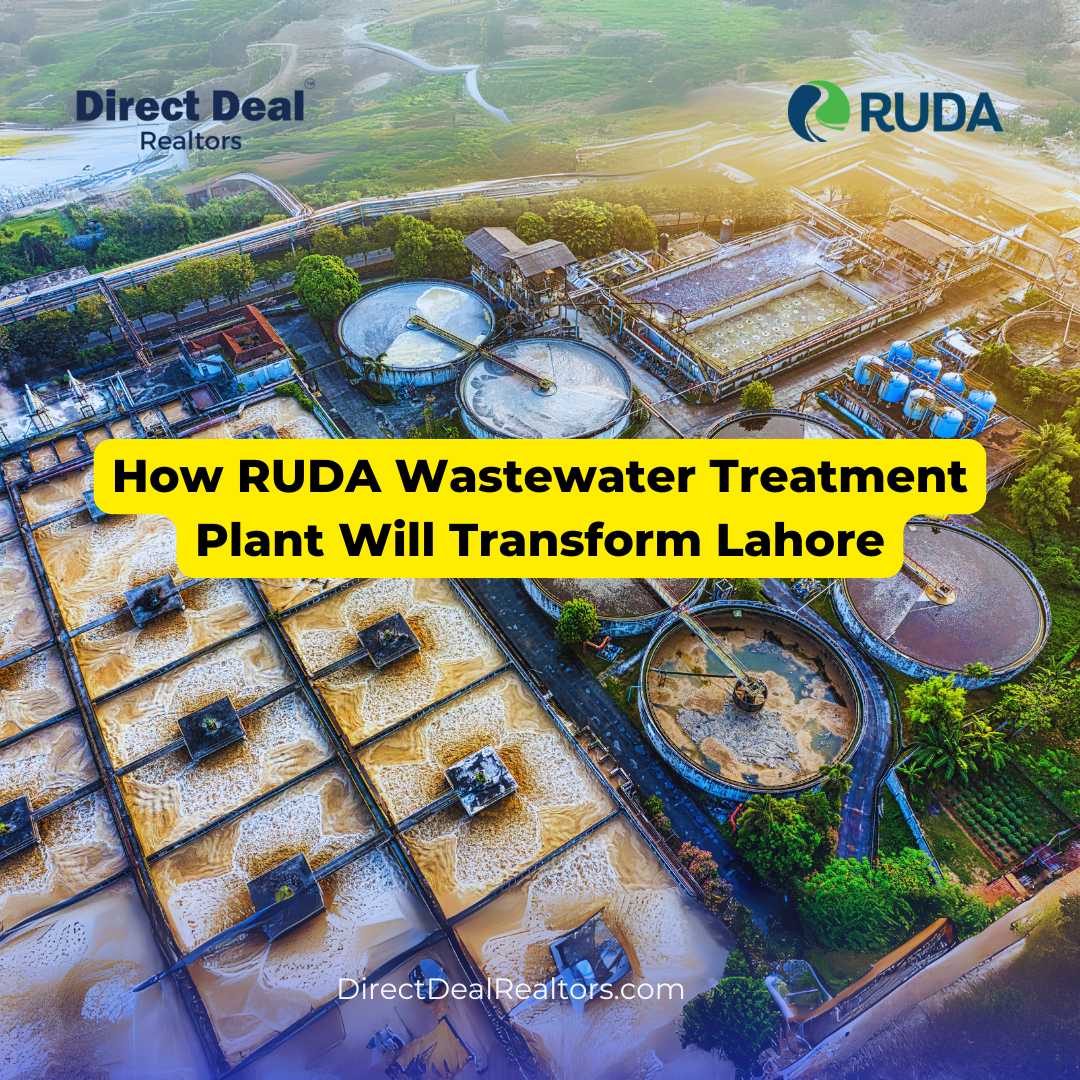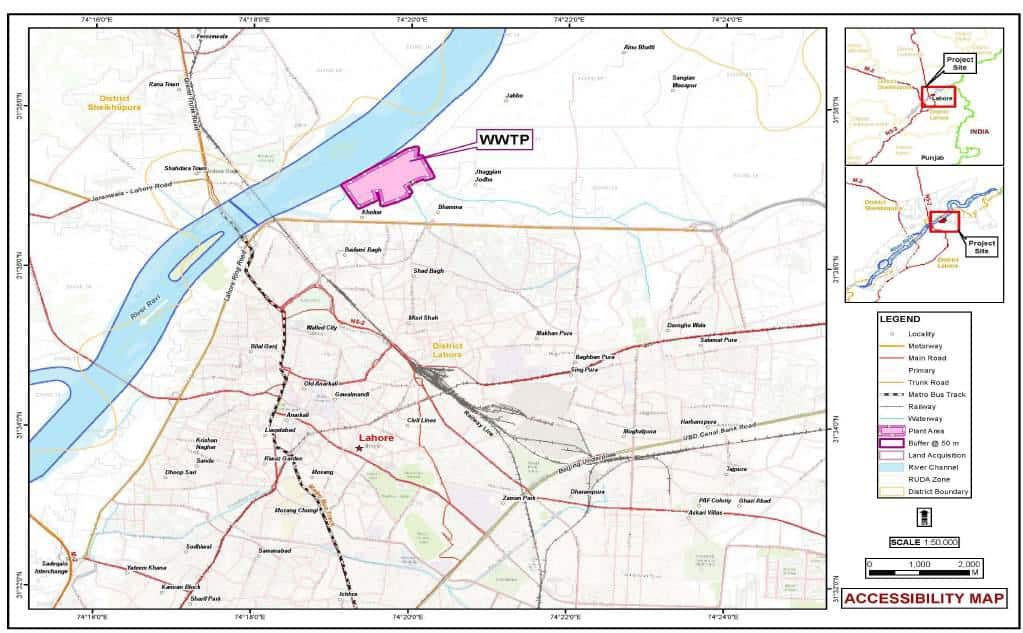RUDA Wastewater Treatment Plant Transforming Lahore
By: Deal
How RUDA’s Wastewater Treatment Plant Will Transform Lahore
The Ravi River, once a lifeline for Lahore, has been reduced to a polluted, dying waterbody. For decades, untreated wastewater from Lahore’s growing population has been discharged directly into the river, turning it into a toxic channel. The Ravi Urban Development Authority (RUDA) has now taken a bold step to address this issue with the development of a Wastewater Treatment Plant (WWTP) in Mahmood Booti/Shadbagh, Lahore. This initiative is part of the the reviving of Ravi river, which aims to restore the river to its former glory. In this blog, we’ll explore how this project will impact Lahore’s residents, the environment, and the future of the Ravi River.
The Crisis: Why the Ravi River Needs Saving:
The Ravi River, one of the six rivers of the Indus system, has been a victim of unchecked & unplanned urbanization and industrialization. Lahore, a city of over 14 million people, generates approximately 1,200 million liters of wastewater daily, most of which flows untreated into the Ravi. This wastewater contains high levels of contamination and details are given below:
- Biochemical Oxygen Demand BOD Levels: The wastewater entering the Ravi has a BOD level of 372 mg/L at Mahmood Booti and 658 mg/L at Shadbagh, far exceeding the permissible limit of 80 mg/L set by the Punjab Environmental Quality Standards (PEQS).
- Chemical Oxygen Demand COD Levels: Similarly, COD levels are 755 mg/L and 1,420 mg/L at these locations, compared to the permissible limit of 150 mg/L.
- Total Suspended Solids TSS levels are 232 mg/L and 270 mg/L, exceeding the limit of 200 mg/L.
These alarming statistics highlight the urgent need for a wastewater treatment solution. Without intervention, the Ravi River will continue to deteriorate, posing severe risks to public health, agriculture, and the environment.
Location of RUDA Wastewater Treatment Plant:

The Solution: RUDA’s Wastewater Treatment Plant:
The Wastewater Treatment Plant (WWTP) in Mahmood Booti/Shadbagh is designed to treat 143 million gallons per day (MGD) of wastewater by 2035. This state-of-the-art facility will use the Conventional Activated Sludge Process (ASP), a proven and efficient technology for treating municipal wastewater. Here’s how it works:
- Preliminary Treatment: Wastewater passes through screens and grit chambers to remove large debris and sand.
- Primary Treatment: Sedimentation tanks allow solids to settle, removing about 60% of suspended solids.
- Secondary Treatment: In the aeration tanks, microorganisms break down organic matter, reducing BOD and COD levels by 90-95%.
- Sludge Handling: The sludge produced is thickened, dewatered, and disposed of in Mono Fills (sludge storage ponds).
- The treated effluent will meet the PEQS standards, making it safe for discharge into the Ravi River or reuse in agriculture and industry.

Impact on Ravi and Lahore Residents:
The WWTP will bring significant benefits to Lahore’s residents, both directly and indirectly. Here’s how:
1- Improved Public Health:
Untreated wastewater is a breeding ground for waterborne diseases like cholera, typhoid, and hepatitis. By treating wastewater, the WWTP will reduce the spread of these diseases, improving the overall health of Lahore’s population. According to the World Health Organization (WHO), access to clean water and sanitation can reduce diarrheal diseases by 21%.
2- Cleaner Environment:
By treating 143 MGD of wastewater, the WWTP will remove 90-95% of BOD and COD from the effluent, significantly reducing the pollution load on the river. Cleaner water will also enhance the aesthetic appeal of the riverfront, making it a more pleasant place for recreation and tourism.
3- Economic Benefits:
The treated water can be reused for agriculture, reducing the demand for freshwater and lowering irrigation costs for farmers. Additionally, the project will create 300 jobs during the construction phase and 50 permanent jobs during the operation, providing employment opportunities for local residents.
4- Restoration of Aquatic Ecosystems:
The reduction in pollutants will allow aquatic ecosystems to recover, supporting the growth of fish, plants, and other organisms. This will enhance biodiversity and create a healthier environment for wildlife.
5- Groundwater Recharge:
The Ravi River is a critical source of groundwater recharge of Lahore. By improving water quality, the RUDA Waste Water Treatment Plant will help protect this vital resource, ensuring a sustainable water supply for future generations.
Challenges and Mitigation Measures:
While the RUDA WWTP project offers numerous benefits, it also presents several challenges. Here’s how RUDA plans to address them:
1- Land Acquisition:
The project requires 280 acres of land, of which 79 acres are yet to be acquired. RUDA has committed to fair compensation and resettlement for affected landowners, in compliance with the Land Acquisition Act, 1894.
2- Environmental Impacts:
Construction activities may temporarily affect air quality, noise levels, and traffic flow. To mitigate these impacts, RUDA will implement dust suppression techniques, noise barriers, and a Traffic Management Plan. Additionally, 472 trees will be removed during construction, but a Tree Plantation Plan (1:10 ratio) will compensate for the loss.
3- Sludge Management:
The WWTP will generate large quantities of sludge, which must be managed carefully to prevent environmental contamination. RUDA plans to use Mono Fills for sludge disposal and explore opportunities for energy recovery through sludge digestion.
Also Read: RUDA Transforming Mehmood Booti Dumpsite into a Green Solar Park
A Model for Sustainable Urban Development:
The RUDA Wastewater Treatment Plant also aligns with the United Nations Sustainable Development Goals (SDGs), particularly SDG 6 (Clean Water and Sanitation) and SDG 11 (Sustainable Cities and Communities).
This RUDA’s project is a game changer for Lahore and the Ravi River. As Lahore continues to grow, initiatives like the WWTP are essential to ensure a sustainable future. While challenges remain, RUDA’s commitment to environmental and social sustainability ensures that the project will deliver lasting benefits for generations to come.